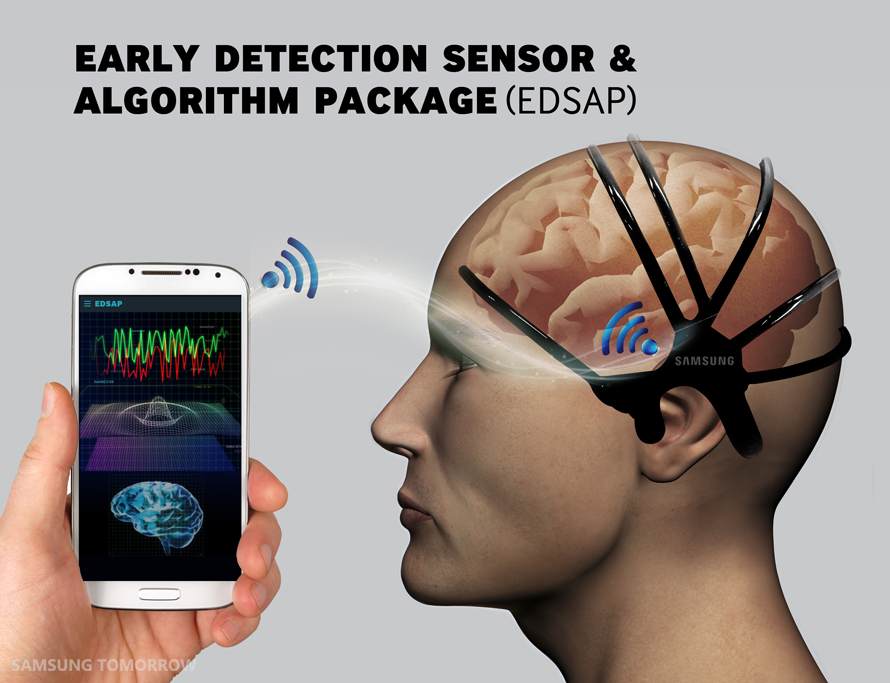by JAMES S. KIM | @james_s_kim
editor@charactermedia.com
There’s more to wearables than just having a cool watch face, counting steps or measuring your heart rate. Engineers at Samsung recently announced that they were working on a headset that can detect signs of stroke, gauge stress levels and analyze sleep by monitoring brainwaves.
Two years ago, five Samsung smartphone and washing machine engineers began an independent project at the company’s Creativity Lab, or C-Lab, where employees are able to test and develop any ideas they might have. The team came up with the Early Detection Sensor and & Algorithm Package (EDSAP).
EDSAP doesn’t introduce a new technique–monitoring electrical activity from the brain isn’t anything new–but the headset has new sensors that can read a much higher quality signal. Current headsets require a gel or saline solution to be applied to create a good electrical connection with the scalp, but a new material discovered by the group of engineers allows the sensors to pick up a better signal without a gel.
The headset can sync with a user’s smartphone or tablet to display the results of a scan, which can be done in under a minute. An algorithm then compares the results of a scan to a larger database, which includes scans of stroke patients, in order to spot any indicators of stroke. The material of the headset also allows EDSAP sensors to be attached to the backside of hairpins or eyeglass temples, allowing for longer periods of monitoring.
While EDSAP still has a ways to go, including full clinical trials, the technology has plenty of potential uses. The engineers saw EDSAP’s capabilities being expanded to other neurological health issues, such as depression, and even heart muscle activities.
___





